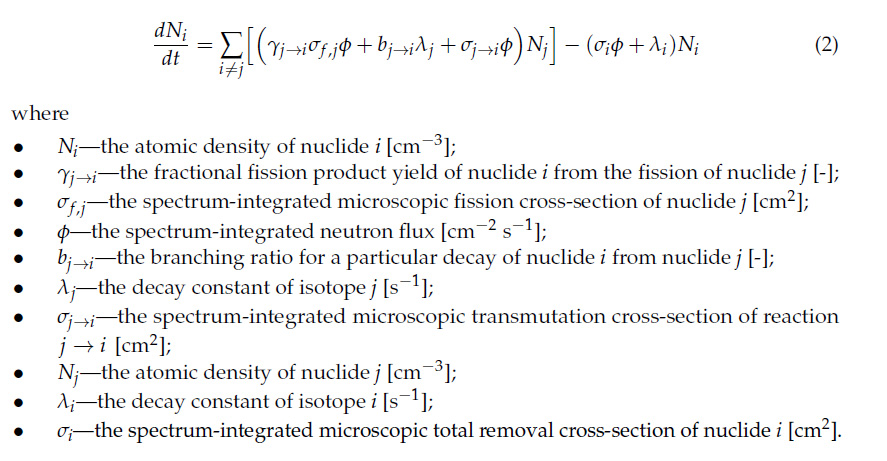Environment & Energy
Related: About this forumA Lovely Scientific Paper Out of Ghana on the Use of Americium.
All human beings have a right to nuclear energy, and that certainly includes the people of Ghana in Africa.
I've been writing some notes to my son on americium based nuclear fuel, expressing some of my ideas (albeit in the fast spectrum) and I came across this paper that cheered me up in these horrible times: Sogbadji, R. B. M., David, S., Akaho, E., & Nyarko, B. J. B. (2016). Neutronic Study of Burnup, Radiotoxicity, Decay Heat and Basic Safety Parameters of Mono-Recycling of Americium in French Pressurised Water Reactors. Environmental Research, Engineering and Management, 72(3), 18-26.
It strikes me as the Ghanians asking the French to do the right thing, since France reprocesses used nuclear fuel, which is not to throw away the valuable americium. (To be fair, one of the three authors is French.)
From the introductory text:
To be fair, not to criticize the authors, I don't believe in vitrification of anything. I regard all of the fission products as valuable as well, as the actinides and it has been, is and always will be a poor choice to discard them. Regrettably, however, the focus of the paper is how to reduce the heat load in vitrified glass repositories, which does not mean that the paper is not worth reading, but rather that some of the work therein should be modified to realize a different goal, extracting the maximal energy from actinides in used nuclear fuel.
Thus, this said, getting at the americium is a good thing, and the conclusion of the paper demonstrates that in at least some of the MOX Am cycles, the load of americium will actually be increased which the authors conclude will be a good thing when fast reactors are available.
Some notable remarks in the paper refers to a "MURE" code which is a synthesis of standard MNCP codes utilizing a numerical approach to solutions of the Bateman Equation that governs the evolution of nuclear fuels:
From a source other than the paper, the Bateman equation is shown below:

From the paper, a graphic showing the MURE code effect on reactivity, demonstrating criticality to a very high burn up for nuclear fuels, 70 MWd/ton before the accumulation of fission products renders the fuel subcritical and in need of reprocessing to recover additional energy from the fuel. 70 MWd is about 6 Terrajoules of energy, the energy value of about 143 tons of oil completely combusted, whereas only a small fraction of the actinides in the described nuclear fuel will actually be subject to fission. Here it is:

Since the paper is intended for minimizing the space of putative "nuclear waste" dumps, and the heat loads therein, there are discussions of reduction of radiotoxicity, which is kind of meaningless up to this date, since the storage of used nuclear fuels has a spectacular record of not killing anyone, despite all the irrational fear devoted to it by people who can't think very well. We may contrast this marvelous property of used nuclear fuels with that of dangerous fossil fuel waste, which kills about 7 million people per year without a whimper of protest - it's "ordinary" - and beyond that is destroying the stability of the planetary atmosphere, threatening all of the world's ecosystems.
I don't credit these proposed "nuclear waste" dumps very much; radioactive materials should be put to use, not dumped. Radiation can do things no other energy source can do, notably break otherwise intractable chemical bonds in serious chemical pollutants, notable halogenated organics. The major impediment to doing so is that there really isn't very much used nuclear fuel on the planet since the overwhelming environmental superiority of nuclear energy is connected to its unparalleled energy to mass ratio. In a better world, we would have more used nuclear fuel, not less.
Anyway it's nice to see nuclear science originating in Ghana. One would hope that Africa would avoid the way the Europe, the United States, and more recently, India and China built their economic strength, on the back of coal. Africa has the opportunity to go nuclear against environmental degradation.
Have a nice weekend.